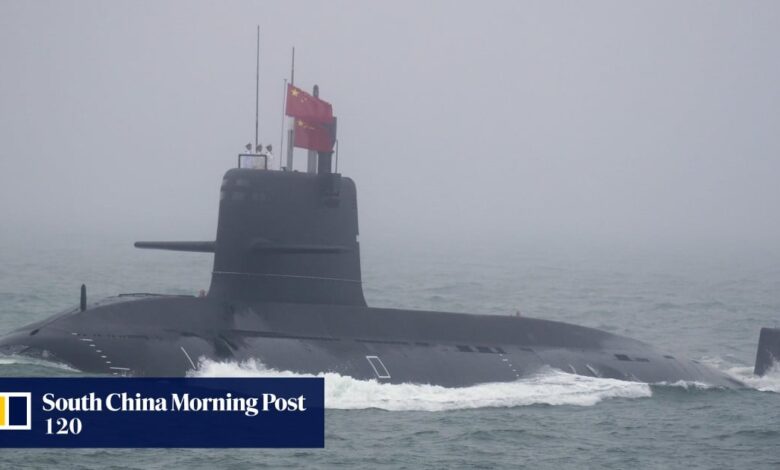Aukus deal: Australia, US, Britain to test new AI system to track Chinese submarines in the Pacific

[ad_1]
The US and two of its closest partners are set to test a new way to track Chinese submarines using artificial intelligence.
Crews flying Pacific missions on the US navy’s top maritime surveillance and attack aircraft will be using AI algorithms to rapidly process sonar data gathered by underwater devices of the US, UK and Australia, the defence chiefs of the three nations announced on Friday.
“These joint advances will allow for timely high-volume data exploitation, improving our anti-submarine warfare capabilities,” according to a joint statement from US Secretary of Defence Lloyd Austin, Australian Defence Minister Richard Marles and UK Secretary of State for Defence Grant Shapps during a meeting in California.
Australia’s Aukus nuclear submarines could fuel arms race despite assurance
Australia’s Aukus nuclear submarines could fuel arms race despite assurance
The three powers said they would deploy advanced AI algorithms on multiple systems, including the P-8A Poseidon aircraft to process data from each nation’s sonobuoys, underwater detection devices.
The announcements are part of a broader security partnership among the three allies known as Aukus, one of a number of regional alliances the US has pursued to counter China.
Pillar I of the partnership focused on building up Australia’s domestic nuclear-powered submarine capability, which will culminate in the joint development of a new submarine for fielding by 2040. Pillar II focuses on cooperation in eight technological areas, including quantum technologies, advanced cybersecurity and hypersonic weapons.
The three defence chiefs announced plans to integrate their ability to launch and recover undersea drone vehicles from torpedo tubes on their current submarines for underwater attack and intelligence-gathering, according to the announcement.
“This capability increases the range and capability of our undersea forces and will also support” Australia’s eventual new submarine called “SSN-Aukus,” the announcement read.
The Pentagon said on Friday the US State Department has approved the potential sale of Aukus-related training devices to Australia for an estimated US$2 billion.
General Dynamics will be a principal contractor in the sale, it added.
Australia’s Aukus deal safe for now, but split in Labor reveals ‘problems ahead’
Australia’s Aukus deal safe for now, but split in Labor reveals ‘problems ahead’
According to the Pentagon’s latest annual report on China’s military, the country currently operates six nuclear-powered ballistic missile submarines, six nuclear-powered attack submarines, and 48 diesel powered/air-independent powered attack submarines.
The Chinese navy’s “submarine force is expected to grow to 65 units by 2025 and 80 units by 2035 despite the ongoing retirement of older hulls due to an expansion of submarine construction capacity,” the report found.
[ad_2]
Source link






